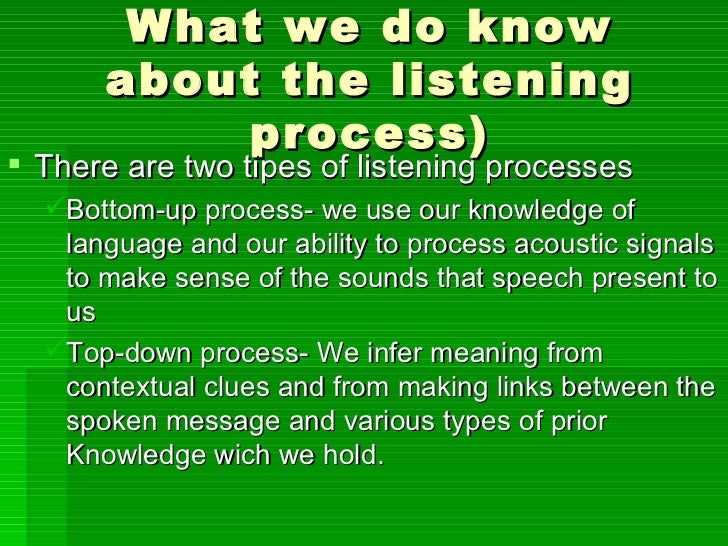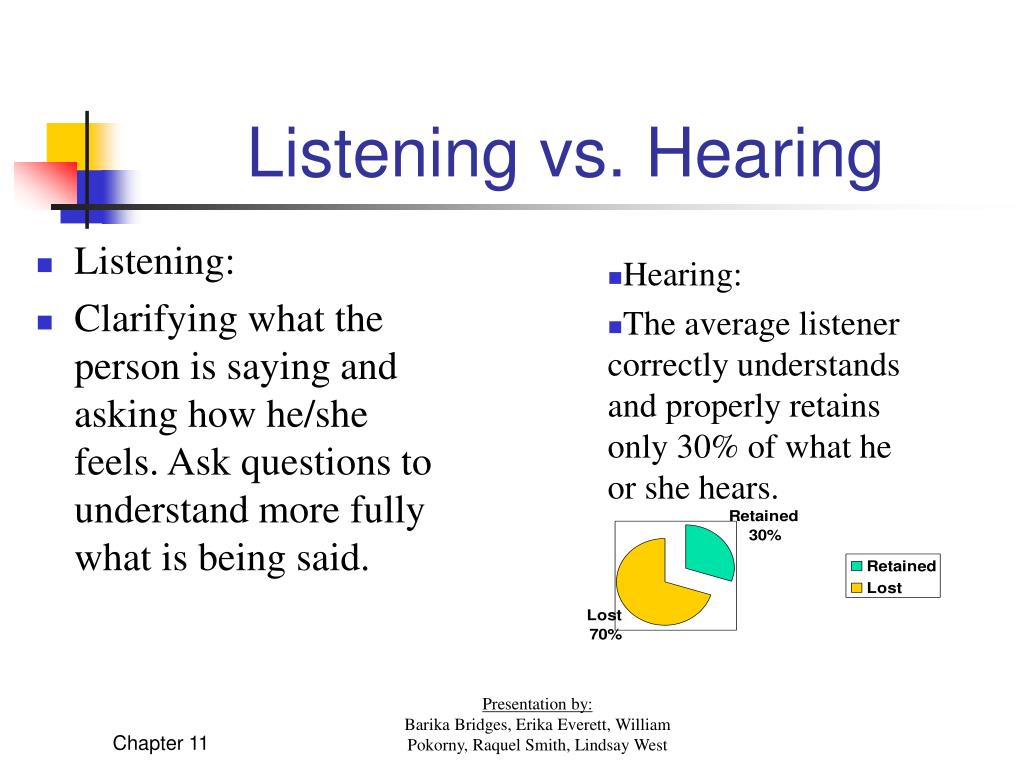

In active listening, non-verbal expressions are also part of efficient communication. The active listener asks questions and also uses body gestures to help understand the speaker. In this category the person is listened to carefully and is not interrupted while the person is expressing himself. This is the highest level of listening as there is efficient communication involved. The following skills can be further developed with Therapeutic Listening: Active Listening People tend to fall into one of these categories: non-listener, marginal listener, evaluative listener and active listener. It is also crucial to understand their thoughts and emotions that go beyond words. Being careful and honest with the listening is vital for the other person to be able to express themselves freely. Trust and empathy are pillars in this therapeutic concept of listening. It helps in their development of confidence, sensory experience, interpersonal, social and cognitive skills in the behaviour of people. Some people define therapeutic listening as a sound based intervention method, designed to help people who experience difficulties in the processing of sensory information or regulating energy levels.Īs this is an evidence based protocol, the method is used in the health sector for the treatment of patients. It is also a method for improving verbal and non-verbal understanding of communication. Emotions are vital to the processing and sharing of information in this setting. Therapeutic listening is the process of gathering information and exchanging communication from a therapeutic setting. What is Therapeutic Listening? The theory The definition of Therapeutic Listening It is the attention to the processing of information that is linked to emotions and thought. Listening is something that goes beyond a physical or a biological process. It should be noted that the auditory system tracks sounds by means of sound waves that are in space.īy separating this auditory sensory system from the theoretical explanation, it is necessary to transcend the importance of listening and mark the differences that this term brings. This process is part of the sensory system which is part of the nervous system and in which, apart from hearing, sight, smell, touch and taste are also involved.


It is also about being able to organize the sounds in association with our mental attention in order to collect information. Listening is the process of listening to sounds in both a conscious and unconscious way. Do you want unlimited ad-free access and templates? Find out more What is listening?


 0 kommentar(er)
0 kommentar(er)
